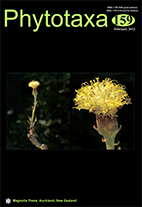Abstract
The genus Bornmuellera Haussknecht (1897: 71) encompasses seven species distributed from the south-western Balkan Peninsula to Anatolia (Warwick et al. 2006). The original description of the genus encompassed only one species, B. tymphaea (Hausskn.) Haussknecht (1897: 72) which he previously described within Vesicaria Adanson (1763: 420). Haussknecht characterized the genus with non-saccate decidous sepals, white flowers with obtuse petals, filaments with appendages at the base, sessile subglobose glabrous fruits and two seeds in each loculi. The other taxa known at the time, B. cappadocica (Willdenow 1800: 452) Cullen & T.R. Dudley in Dudley & Cullen (1965: 228), B. glabrescens (Boiss. & Balansa in Boissier 1856: 32) Cullen & T.R. Dudley in Dudley & Cullen (1965: 228) and B. baldaccii (Degen 1896: 413) Heywood (1964: 61), were left classified in either Ptilotrichum Meyer (1831: 64, e.g., Degen 1896, Boissier 1867) or Vesicaria (Boissier 1856). Later, Heywood (1964) and subsequently Dudley & Cullen (1965) taxonomically re-defined the genus, whose new circumscription was followed by succeeding authors (Hartvig 2002, Warwick et al. 2006).

